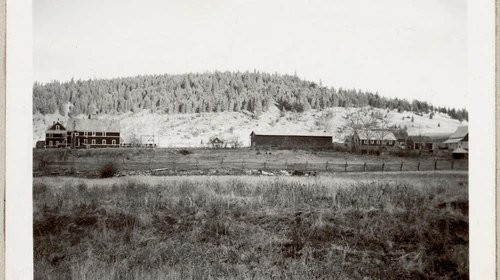By Jake Cardinal, Local Journalism Initiative Reporter
(Trigger Warning) – The following article contains overt discussion of Residential Schools which may be triggering and/or distressing to some readers. A national 24-hour Indian Residential School Crisis Line is available at 1-866-925-4419.
On January 25, 2022 the chief and council of Williams Lake First Nation (WLFN) announced the preliminary findings of an investigation into the St. Joseph’s Mission Residential School.
The data recovered suggests that there could be as many as 93 unmarked grave sites, which may or may not contain children from St. Joseph’s.
While the initial phase of the investigation started about nine months ago, with investigators combing through archival research and interviews with survivors, the 93 possible First Nation bodies were discovered using ground-penetrating radar, in addition to aerial and terrestrial LiDAR sensors.
St. Joseph’s residential school was operated from 1891 to 1981. In 1964, the school grew to include Onward Ranch, a nearby farm which some have said enlisted slave labour from the First Nations students as a way to help sustain operations.
In an interview with CBC news, WLFN Chief Willie Sellars, said of the announcements, “It is beyond scary. It’s really hard not to get emotional about these discussions — no matter how many times I talk about it I still feel that hurt in my heart. But the scariest part of our first phase of investigations [is] we’ve only done 14 hectares.
“We still have over 400 hectares to do.”
Sellars then went on to mention that through the archival research and interviews conducted, the First Nations has identified some areas that could potentially hold high numbers of graves.
“Our team has identified some very high potential areas that continue to get brought up. [Areas] that I have heard stories about since I was a young child and that’s alarming to me, what we’ve been able to discover after the first phase — there’s going to be multiple phases.
“The reality of the legacy of these schools is that we’re not the first ones to uncover these findings and we’re not going to be the last ones.”
When asked about what the national response has been like in regards to the recent findings, Sellars said that there, “has been an overwhelming amount of support that continues to flood in. Y’know, the former national chief, politicians, First Nations and non-First Nations alike, and just Canadians.”
“We are still getting that hate mail though. We’re still getting those dis-believers and those individuals that think we’re doing something wrong. Some of it is so hateful and bizarre that you just want to feel discouraged, but you know it’s the minority. And we’re going to keep that in mind as we continue to move forward in this journey in this investigation.”
As for the notion of a possible excavation, Sellars listed some issues that surround St. Joseph’s. “Surrounding Williams lake are multiple Nations – multiple communities whose kids, whose ancestors went to that school. When we start talking about excavation as next steps, it’s a broader discussion that needs to be had,” he said.



Be the first to comment on "Williams Lake First Nation has more ground to cover in search for unmarked graves"